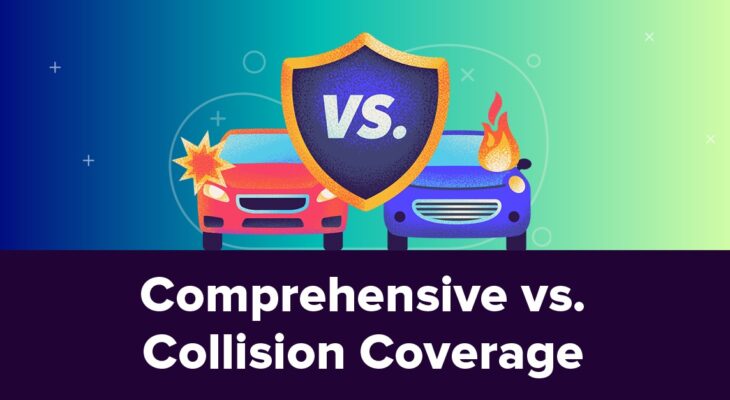Car insurance is essential for protecting your vehicle and finances in the event of an accident or other unforeseen circumstances. Two common types of coverage included in many car insurance policies are collision and comprehensive coverage. While both provide financial protection for your vehicle, they differ in terms of the types of incidents they cover and the extent of coverage they offer. In this article, we’ll explore the differences between collision and comprehensive coverage, helping you understand how each works and what they entail.
Collision Coverage:
Collision coverage is a type of insurance that helps pay for repairs to your vehicle if it’s damaged in a collision with another vehicle or object, regardless of who is at fault. This coverage is typically required if you’re leasing or financing your car, but it’s also beneficial for all drivers who want financial protection in the event of an accident.
Key features of collision coverage include:
- Coverage for Collisions: As the name suggests, collision coverage specifically covers damage to your vehicle resulting from collisions with other vehicles or objects, such as trees, poles, or buildings.
- At-Fault Accidents: Collision coverage applies regardless of who is at fault in the accident. Whether you caused the collision or another driver was responsible, your collision coverage will help pay for the cost of repairing your vehicle, minus your deductible.
- Limited Coverage: It’s important to note that collision coverage only covers damage to your vehicle resulting from collisions. It does not cover damage caused by other events, such as theft, vandalism, or natural disasters.
Comprehensive Coverage:
Comprehensive coverage, sometimes referred to as “other than collision” coverage, provides protection for your vehicle against a wide range of non-collision incidents or “acts of God.” This type of coverage offers financial reimbursement for damages caused by events beyond your control, such as theft, vandalism, fire, hail, floods, or falling objects.
Key features of comprehensive coverage include:
- Broad Coverage: Comprehensive coverage is more expansive than collision coverage and covers a broader range of incidents. In addition to collisions, it protects your vehicle from damage caused by theft, vandalism, fire, weather-related events, and other non-collision incidents.
- Non-Collision Damage: Unlike collision coverage, which specifically covers damage resulting from collisions, comprehensive coverage extends to damage caused by various non-collision events. This can include incidents such as your car being stolen, broken into, or damaged by hail during a storm.
- No-Fault Incidents: Comprehensive coverage applies regardless of fault, meaning you can file a claim for damages caused by non-collision events even if you were not at fault in the incident. This provides valuable financial protection in situations where you have no control over the damage to your vehicle.
Key Differences Between Collision and Comprehensive Coverage:
- Types of Incidents Covered: The primary difference between collision and comprehensive coverage lies in the types of incidents they cover. Collision coverage applies specifically to damage resulting from collisions with other vehicles or objects, while comprehensive coverage protects against a broader range of non-collision events.
- Fault Determination: Collision coverage applies regardless of fault, meaning you can file a claim for damage to your vehicle even if you caused the collision. In contrast, comprehensive coverage also applies regardless of fault, but it extends to non-collision incidents where fault may not be relevant, such as theft or vandalism.
- Coverage Limits: Collision and comprehensive coverage may have different coverage limits and deductibles, depending on your insurance policy. It’s essential to review your policy details carefully to understand the extent of coverage and any out-of-pocket expenses you may be responsible for in the event of a claim.
Conclusion:
Collision and comprehensive coverage are two essential components of car insurance that provide financial protection for your vehicle in different scenarios. Collision coverage protects against damage resulting from collisions with other vehicles or objects, while comprehensive coverage extends to a broader range of non-collision incidents such as theft, vandalism, and weather-related damage. By understanding the differences between these two types of coverage and how they work, you can make informed decisions when selecting car insurance policies and ensure that you have the appropriate level of protection for your vehicle.










